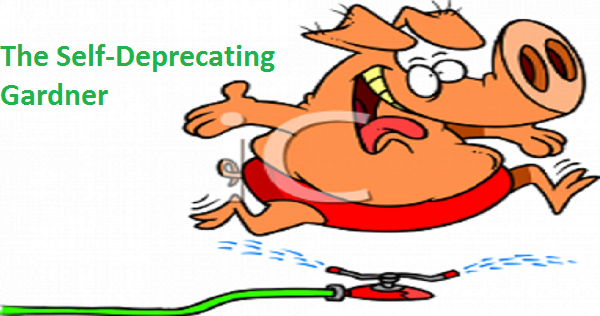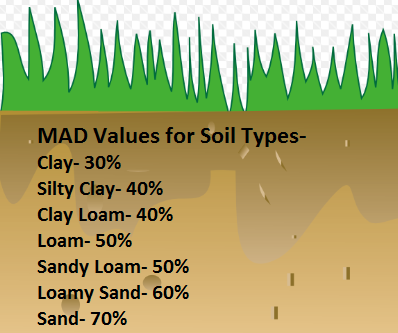
This Spring, the Self-Deprecating Gardner in conjunction with Liberty Park Press will offer a series of irrigating tools and tips that will hopefully help to improve the health of plants and save money on the Summer watering bill.
In our last tutorial in regards to effective watering of landscape, we thoroughly discussed irrigation management based on specific soil types and the importance of understanding how plants interact with dirt. Now that a baseline DIY has been established for working with the entire spectrum of soil profiles, specific variables can be introduced in tweaking sprinkler system schedules to save resources, money and promote plant growth.
To quickly review our last column, we emphasized the available water holding capacity of soil or AW as a variable. Of course fine soil particles such as clay and loam have the highest AW, while coarse soils with a majority of sand components have the lowest ability to retain water. In multiplying a plant’s root zone length in inches by AW, Plant Available Water or PAW can be determined.
This week, we will introduce Management Allowable Depletion or MAD as the next step in creating an effective moisture-based irrigation schedule in an automated sprinkler controller. The simple definition of MAD is how much soil moisture the decision maker chooses to be utilized by plant roots and evaporation before the next irrigation event. As MAD is expressed as a percentage, it creates a cut and dry method (no pun intended) for clearly declaring a value of effective water allowed to be depleted from the soil, before it is time to run the sprinklers again. MAD works directly with PAW to refine the exact amount of moisture that is being managed based on the plant species, root zone length and soil type. The product of MAD and PAW is referred to as Allowable Depletion or AD and is a keystone variable in specifically determining the range between irrigation events. The clock begins ticking at the direct conclusion of an irrigation event, when the landscape is saturated, or after significant rainfall. The rule of thumb and industry standard for the variable is 50% allowed depleted after the soil reaches what is called “field capacity” or complete saturation. The logic goes as follows, in most landscapes, 50% of moisture will be allowed to dissipate through evaporation and combined with plant transpiration before the next watering event takes place.

Thankfully, the researchers behind the concept of MAD allow for flexibility in the percentage and accounting for a wide array of differing landscape watering needs. The point being, get MAD about your landscape and use it. For example, certain plant species thrive in dry conditions or instances of stress and MAD can be adjusted to artificially introduce a short term drought type by facilitating a strict water diet. (It should be noted that increased stress on plants requires more monitoring efforts for signs of possibly decay or wilting. In other words, apply the concept wisely.) Thus, a hearty shrub with a root zone of 10 inches in clay-loam soil can be assigned a MAD value of 70% and be applied to the following simple equations. AW x RZ = PAW and PAW x MAD = AD
Plug in the following numbers to the equations- .18in/in. (the AW of clay-loam soil, the table can be found here) x 10inches (the plant’s root zone) = PAW of 1.8in/in.
and
1.8in/in. (PAW) x 70% (MAD)= 1.3 (AD)
In comparison, if the shrub was not subject to “sweating with the oldies” with Richard Simmons the AD would have equated to a mere .9 and shortened the range in artificial irrigation events by almost one full day and the added reality of costs on the monthly water bill.
The concepts of AW, PAW, MAD and AD constitute one half of the irrigation scheduling paradigm and incorporate factors that you can control. It is vitally important to master these concepts and formulas as the other half of moisture-based scheduling is based off of weather conditions and relies on predictions, trends and the implementation of technology into an existing irrigation infrastructure. In our next article, we will define the specific factors that influence water loss and how the numbers should be applied in creating a specific watering schedule. The loaded concept of evapotranspiration or ET will thoroughly be dissected as well as the introduction to the basis for incorporating changing conditions into scheduling practices.
As always the Irrigation Association is great destination and reference for resources and information.